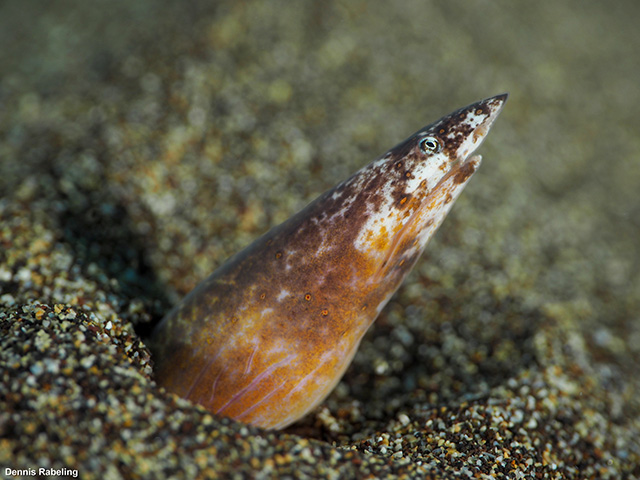| Ophichthidae (Snake eels), subfamily: Ophichthinae |
| 60 cm TL (male/unsexed) |
|
demersal; marine; depth range 0 - 85 m |
| Eastern Atlantic: Western and eastern Mediterranean, eastern Atlantic south to Azores, Madeira, and the Canary islands. |
|
Vertebrae: 132-139. This species is distinguished by the following characters: tail 1.6-1.7, head 12-15, and body depth 56-83 in total length; preopercular pores 4 and there are 5 pores in supratemporal canal; teeth conical and uniserial on jaws, becoming biserial on vomer of large specimens, vomerine teeth 8-14; when fresh body ochre in color with numerous small dark brown spots, those spots forming a continuous mid-dorsal band, yellowish on ventral surface; the head with dark brown spots over a pale background, a prominent horizontal white patch beneath and behind the orbit; MVF 52-134, total vertebrae 132-139 (n=6) (Ref. 101270). |
| Burrows in sand or mud on the continental shelf (Ref. 4455); usually in fine sand (Ref. 101270). |
|
Least Concern (LC); Date assessed: 20 October 2011 Ref. (130435)
|
| harmless |
Source and more info: www.fishbase.org. For personal, classroom, and other internal use only. Not for publication.
